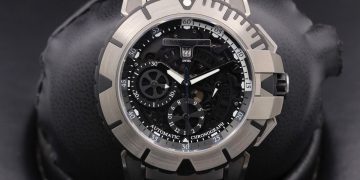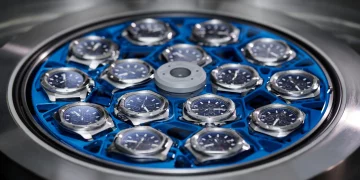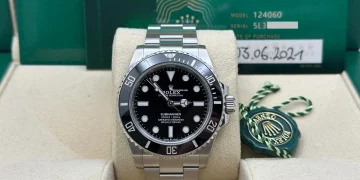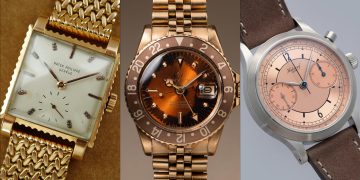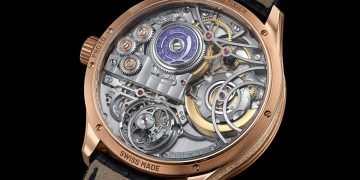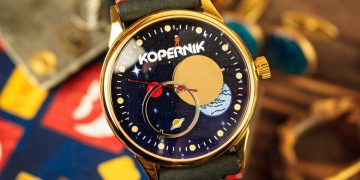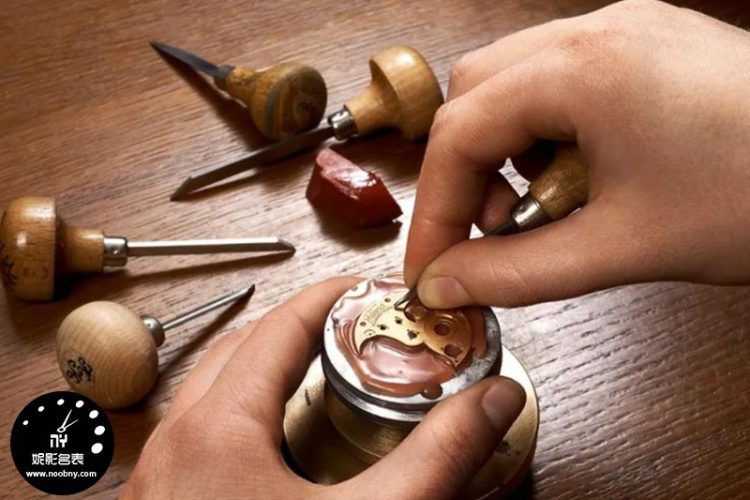Watches, especially mechanical timepieces, are intricate pieces of engineering that require regular care and maintenance to ensure they continue to function correctly and retain their value over time. A well-maintained watch can last for decades, and some even appreciate in value if they are kept in excellent condition. However, neglecting regular maintenance can lead to the gradual deterioration of the movement and other components, potentially shortening the life of the watch. In this article, we will explore how regular maintenance impacts the longevity of a watch, the key aspects of servicing, and why it is crucial for ensuring the continued functionality and value of timepieces.
1. Understanding the Importance of Regular Maintenance
At its core, a mechanical watch relies on a system of gears, springs, and small, precise components that work together to keep time. While these components are designed to last a long time, the constant movement, friction, and wear and tear can cause them to deteriorate over time. Regular maintenance ensures that the movement stays in optimal condition, preventing issues that could result in loss of accuracy, damage to the movement, or corrosion of vital parts.
a. Lubrication of the Movement
One of the primary reasons for regular maintenance is to ensure that the internal components are properly lubricated. A mainspring in a mechanical watch stores energy, which is gradually released through the escapement mechanism. The gears, pivots, and other moving parts must be lubricated to reduce friction and prevent excessive wear. Over time, lubricants break down and dry out, causing increased friction and wear, which can lead to inaccuracies in timekeeping and even potential damage to the movement.
During a regular service, a professional watchmaker will disassemble the movement, clean the parts, and reapply lubrication where necessary. This reduces friction, ensuring the smooth operation of the watch and prolonging the life of its components.
b. Cleaning and Removing Dust and Debris
Another significant aspect of regular maintenance is cleaning. Even the smallest particles of dust, dirt, or moisture can cause long-term damage to the delicate parts inside the watch. Over time, these contaminants can cause the gears to seize, and in extreme cases, can lead to rust or corrosion. A proper cleaning removes any debris or buildup, allowing the movement to run smoothly and preventing potential malfunctions.
c. Inspection for Wear and Tear
During regular servicing, the watchmaker will inspect all components for signs of wear and tear. This includes checking the balance wheel, hairspring, and other critical elements of the movement. If any parts are worn or damaged, they will be replaced to ensure the continued precision and reliability of the watch. Regular inspections catch small issues before they become more serious, preventing more costly repairs or irreversible damage down the line.
2. How Regular Maintenance Extends the Life of the Watch
a. Preventing Irreparable Damage
When a watch is worn over a long period without servicing, minor issues can develop into major problems. For instance, worn-out components, like the mainspring, escapement, or crown, can cause the watch to stop working altogether or run inaccurately. If not addressed, these problems can lead to further damage, which may not be repairable. Regular servicing addresses these problems before they escalate, ensuring that the watch remains functional and accurate for years.
Additionally, many watches are exposed to moisture, temperature changes, and shock throughout their life. While most watches are designed to withstand these elements, constant exposure can weaken seals, increase the risk of water damage, or disrupt the movement. Regular checks on the watch’s water resistance and gaskets ensure that these issues are identified early and fixed, extending the life of the watch.
b. Maintaining Accuracy Over Time
The accuracy of a watch is influenced by various factors, including temperature, wear, and the movement’s state of lubrication. Over time, the friction between moving parts can lead to slight inaccuracies, even in well-made watches. Regular servicing and adjustments by a professional watchmaker ensure that the watch is regulated to the correct time and that it continues to keep time as accurately as when it was first manufactured.
Watchmakers use specialized tools and equipment to measure the performance of the movement and adjust it to ensure it operates within the manufacturer’s specified accuracy. By addressing any inaccuracies early, the long-term performance of the watch is ensured, and the wearer’s experience of precise timekeeping is maintained.
c. Preserving Value
For high-end luxury watches, regular maintenance is crucial not only for preserving functionality but also for preserving value. Watches from prestigious brands like Rolex, Patek Philippe, or Audemars Piguet are often seen as investments. Maintaining these watches properly ensures that they retain their value over time and can even appreciate in value if kept in excellent condition.
Collectors and investors alike are keenly aware of the importance of a watch’s provenance and service history. A well-maintained watch with a full service history is more desirable in the secondhand market, and it may fetch a higher price compared to a neglected watch with no servicing record. In some cases, neglecting to maintain a luxury watch properly can lead to its value depreciating significantly, as buyers may view it as a risky investment.
3. The Impact of Regular Maintenance on the Watch’s Movement
Mechanical watch movements are complex, with several delicate and precise components working in tandem. The overall health of the movement is directly tied to the health of each individual component. Regular maintenance helps keep the movement in peak condition by preventing wear, tear, and other issues that can compromise its accuracy or longevity.
a. Improved Durability of Key Components
Key components like the balance wheel, escapement, and mainspring are under constant stress due to their mechanical nature. Without regular care, these components can become worn or damaged. For example, the balance spring (also known as the hairspring) is one of the most sensitive parts of the movement. Over time, it can become deformed, affecting the timekeeping accuracy. Regular servicing ensures that these components are in top shape, preventing costly repairs and ensuring longevity.
b. Smooth Operation of the Gears and Wheels
The gears and wheels in a mechanical watch are finely crafted to mesh seamlessly, transmitting energy from the mainspring to the hands of the watch. These gears are subject to constant friction, which can cause them to wear down over time. Regular servicing helps keep the gears properly aligned and lubricated, reducing friction and ensuring the movement operates smoothly. This minimizes wear and tear, extending the lifespan of the movement.
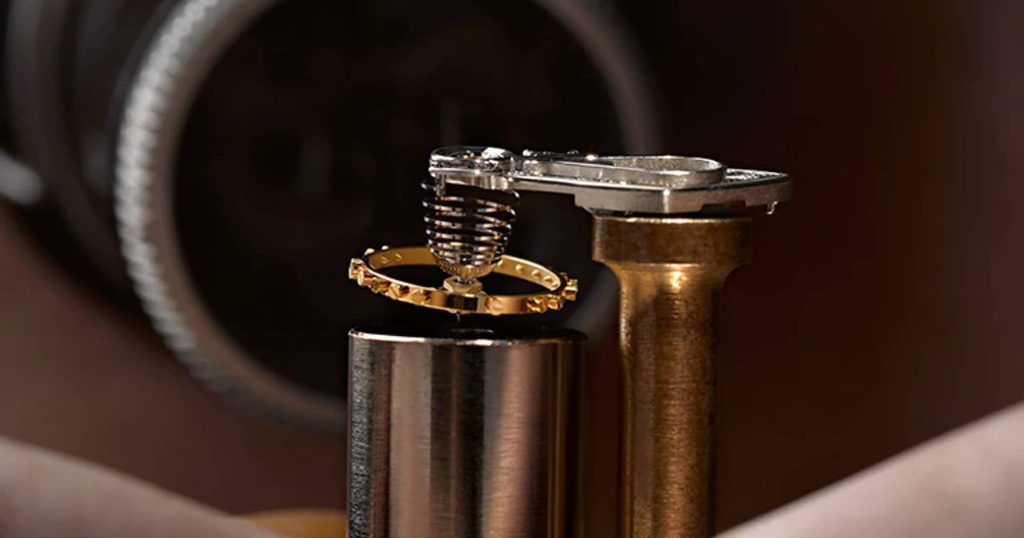
4. How Often Should You Service Your Watch?
The frequency of servicing depends on various factors, including the type of watch, the brand, and how often the watch is worn. As a general rule, most watchmakers recommend having your watch serviced every 3 to 5 years. This allows enough time for the lubricants to break down and the movement to show signs of wear, but not so long that significant damage is caused.
If you notice any issues with the accuracy, functionality, or appearance of the watch, it is important to have it inspected by a professional as soon as possible. Early intervention can prevent more severe problems and reduce the cost of repairs.
5. Other Maintenance Tips to Prolong Watch Life
While professional servicing is essential, there are several steps you can take as a watch owner to help extend the life of your timepiece:
- Store the Watch Properly: When not in use, store your watch in a dry, safe place. Avoid leaving it exposed to direct sunlight, humidity, or extreme temperatures. For automatic watches, using a watch winder will help keep the movement running smoothly.
- Avoid Excessive Shocks: Mechanical watches are sensitive to shocks and impact. Be mindful when engaging in activities that may subject the watch to sudden jarring or banging.
- Check the Water Resistance: Regularly check the gaskets and seals to ensure the watch is still water-resistant, especially for watches that are frequently exposed to moisture.
- Wear the Watch Regularly: Wearing the watch regularly helps keep the movement powered and the lubricants distributed evenly across the internal components.
6. Conclusion
Regular maintenance is essential for prolonging the life of a watch and ensuring its continued accuracy and functionality. Whether you own a luxury mechanical watch or a more modest timepiece, taking care of it through routine servicing and proper handling can make a significant difference in its longevity and performance. Not only does regular maintenance prevent costly repairs and preserve the value of the watch, but it also ensures that the watch continues to serve its primary purpose—keeping accurate time—while maintaining its beauty and craftsmanship for years to come.



